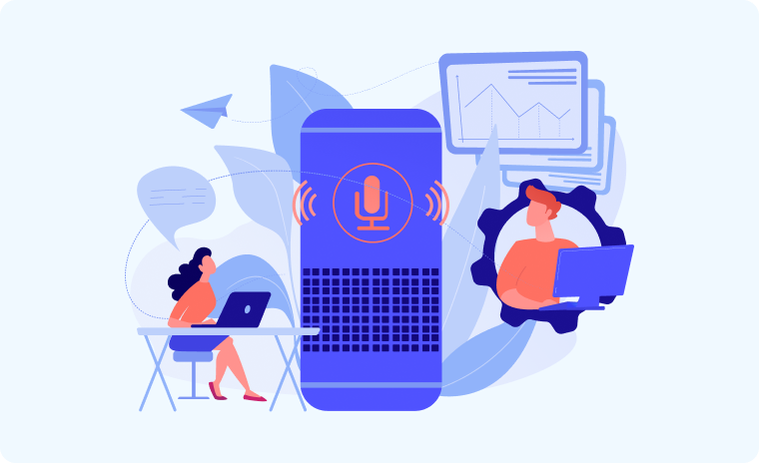Can No-code Make Hands-free Coding Easier?
We have been arguing in this blog that no-code is here to change the future: It will basically change the way software is produced, take the software production capability to masses and everything will follow from that. Our very own Beyza Özkan (Product Manager, Peaka) recently got rather specific in one of her tweets about a possible scenario where no-code could allow people to use voice commands to create apps. Sounds intriguing, doesn’t it?
Dictation software has been around for a while. You come across its applications every time you use Alexa or Siri or adjust the temperature in your car by simply talking to it. However, coding by voice is tricky because it involves non-dictionary words and syntax rules. Your commands should conform to a predefined form for the software to implement them. But this hurdle hasn’t stop coders from taking advantage of this technology. For example, the voice-coding app, Serenade, serves as a digital assistant for the coder while the hands-free coding platform Talon, which replaces mouse with a mic and an eye-tracker, has introduced a comprehensive body of commands that make more control over the code possible. These two apps have been a great help to coders who suffer from work-related repetitive strain injuries that threaten to put an end to their careers due to severe pain and numbness in hands.
No-code definitely has a role to play here. It can be expected to set the basis for a system that can turn voice into commands, build up a library and lay out the use cases. Just like no-code technology is used today to move around predefined blocks of code to carry out certain tasks, most of the time using a drag-and-drop UI, hands-free no-code applications can use designated voice commands to carry out certain functions.
This sounds exciting, but is it really revolutionary? Is it a clear breakthrough considering where the no-code technology is at now? Probably not. The abstraction level in hands-free coding will most likely not be any higher than what is possible with no-code platforms today. The system will be able to operate within the boundaries set previously, carrying out certain tasks using commands mapped to predefined actions and components. In order to effect changes at the granular level, separate commands will have to be assigned to every little separate action. In other words, no-code will be facilitating what’s already on the menu. Therefore, high-level instructions such as “Siri, create me a web app that works as a CRM suite for my sales force” will probably find itself a reply along the lines of “Come again, please?”
In the short-to-medium term, it is safe to say that no-code will only be limited to facilitating what’s on the menu—it will serve as the navigation bar for software in carrying out what is possible from among the predefined options. This means that we have to lower our expectations with regards to what no-code will achieve at the beginning. The true revolution will possibly come with the wide-scale introduction of machine learning and the collaboration no-code will build with this transformative technology.




 Please
fill out this field
Please
fill out this field









